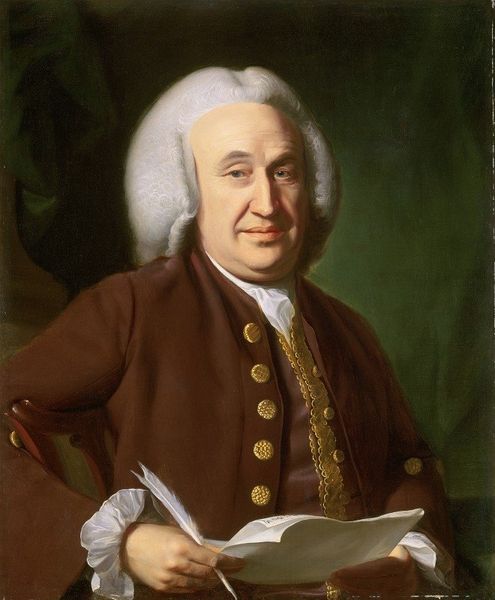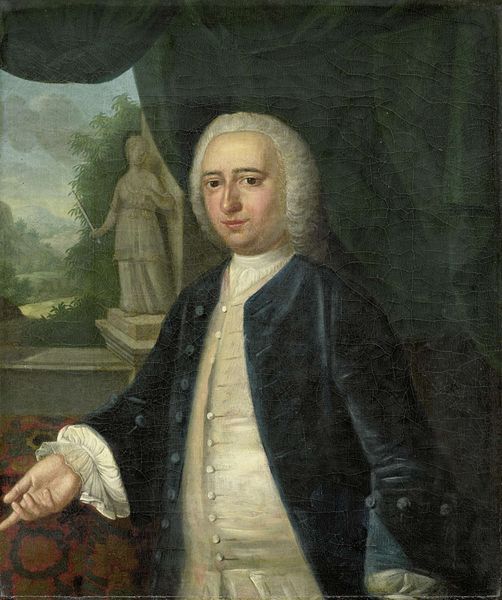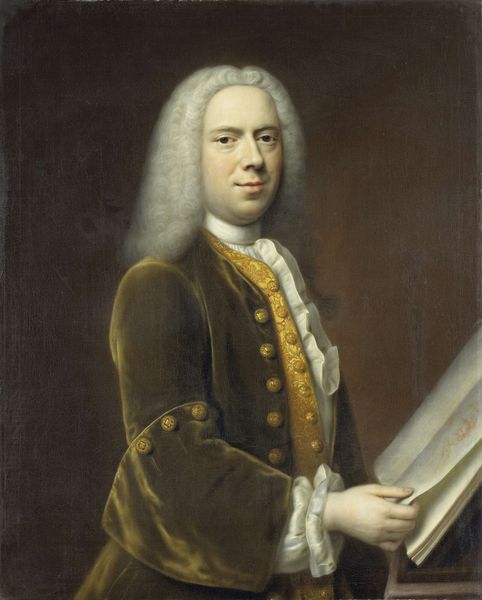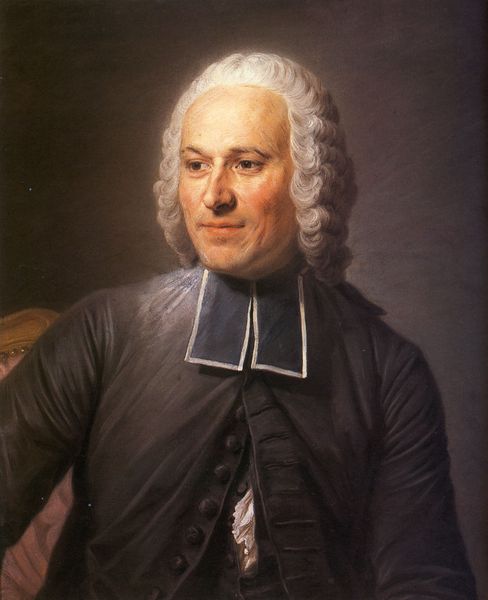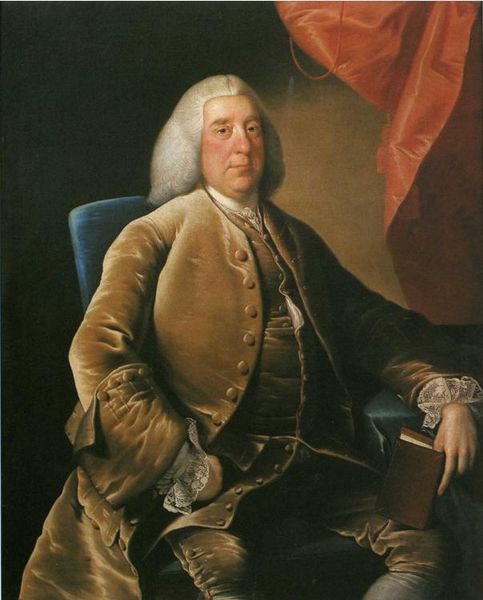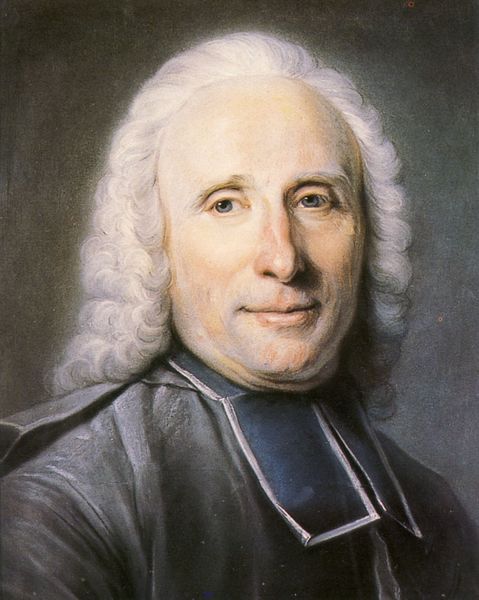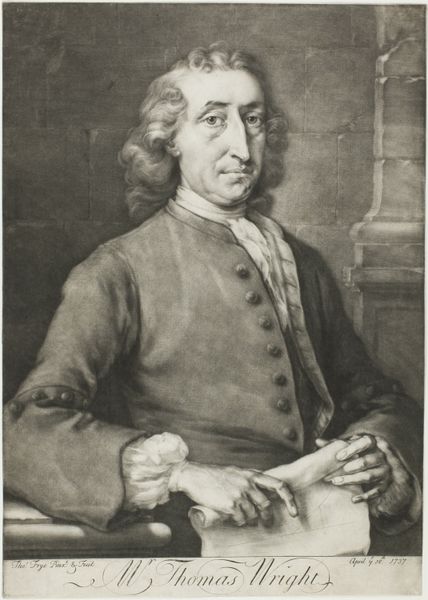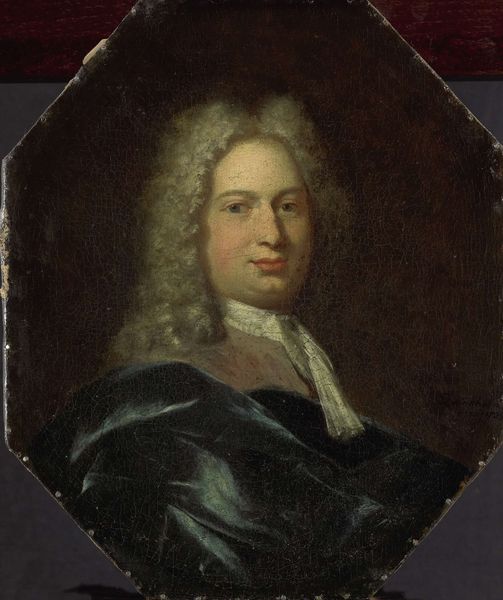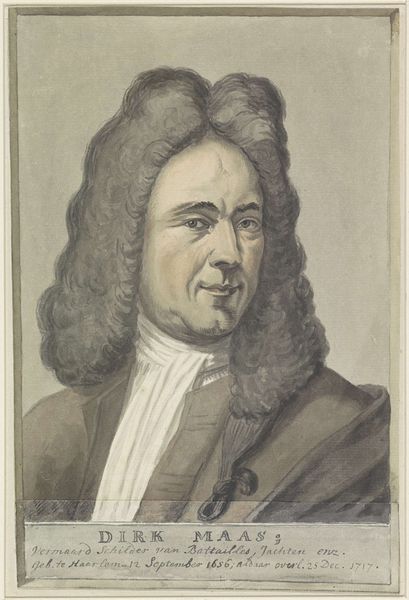
Dimensions: height 79.5 cm, width 63.5 cm, depth 7.5 cm
Copyright: Rijks Museum: Open Domain
Editor: We are looking at a self-portrait from sometime between 1755 and 1769 of Engel Sam when he was around 60 years old, painted in oil. The painting seems rather subdued; the color palette is fairly limited and the man looks quite serious. What do you see here? Curator: I see a deliberate construction of identity, playing on the visual codes of respectability in the mid-18th century. Think about who would commission or create such a work. Was it purely personal, or intended for a specific audience? Self-portraits at this time functioned less as candid reflections, and more as carefully orchestrated declarations. Editor: So, you’re suggesting it's less about true self-revelation and more about social presentation? The clothing and wig appear deliberately chosen, wouldn't you say? Curator: Precisely. The austere clothing and formal wig represent his standing within society. The location would have an effect as well. It wasn’t simply about hanging art in a private home; galleries were growing more common and public access changed art’s role. How do you think the piece speaks to the societal conventions of the time? Editor: That's an interesting way to look at it! The piece shows status as an aspiration and reflects the artist's place within his social context. Thanks, this reframes my view of the portrait entirely. Curator: My pleasure. Considering the societal currents can help enrich our interaction with works of art, and it helps us engage with a dialogue across time.
Comments
No comments
Be the first to comment and join the conversation on the ultimate creative platform.

